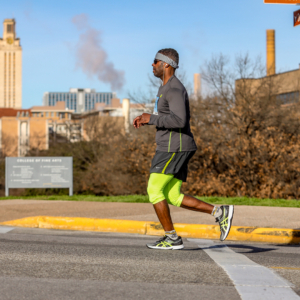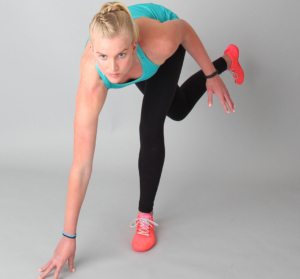Expand your knowledge as a runner when you learn about these running terms
Running is a great addition to your life. Not only does it help you get or stay in shape, but it also stimulates your brain and improves your mental health. Every day people discover running through their friends, social media, or curiosity. While running itself is a simple concept, runners have been known to complicate it a bit with science, analytics, and terminology! We introduce you to and break down various running terms all runners should know, especially first-timers.
Expand your running vocabulary
Base Run

Different training runs will prepare you for race day.
This is the short run or maintenance run that you do. This should be done at a moderate speed for a moderate length of time. At this pace, you should be able to hold a conversation easily.
Strides
This is a run of 50-100m. Your stride is purposefully longer as you gain speed and momentum before reaching your top speed. Great for activating and strengthening muscles. Strides can be done as a warm-up, cool down, or specific workout aimed at increasing your speed.
Shakeout
Extremely easy-paced jog meant to loosen your body and get the blood flowing. Can be a shorter distance (1-2 miles) or time (10-15 minutes).
Progression Run
As the name suggests in this type of run you progressively increase your speed until your pace becomes more difficult to sustain. This helps your body acclimate to different paces and increase your lung capacity.
Intervals

Runners often run strides or a quick shakeout run before a race.
Intervals are the short, slow runs sandwiched between your longer, fast runs. The longer runs are meant to be more intense with the shorter runs acting as your recovery. Adding intervals is a great way to vary your running routine and grow as a runner.
Turnover Workout
This workout includes short bursts so that your body becomes acclimated to the rotation of the joints. Higher turnover uses less energy and decreases stress on your muscles.
Threshold Run
This run involves a speed that is slightly faster than your usual pace but a little under your 5K pace. As you grow as a runner you should be able to hold this pace for at least 30 minutes.
Tempo Run

Pickup runs prepare you for when you get fatigued at the end of your race.
Tempo refers to a higher speed at which you can maintain momentum for a long time. This type of workout can be uncomfortable, but it’s great for anyone looking to build their stamina or push themselves.
Pickup Run
Usually done in the middle or end of a workout or run. Increasing your pace in the middle or at the end of a run is perfect for getting used to running while being fatigued. It helps train your mind and body to eventually run longer distances and times.
Recovery Run
As the name suggests, it is there to help you recover. It is a slow-paced run and helps you with your form and improves fatigue resistance. Meant to be extremely relaxed.
Cool Down
A light jog of a mile or two keeps the blood flowing even though you are progressively slowing down.
Running has multiple benefits, but beginner runners can make mistakes when starting out. Become familiar with these running terms and trust the process. Remember to effectively warm-up before any run to ensure you get the most out of your workout and prevent injury.







